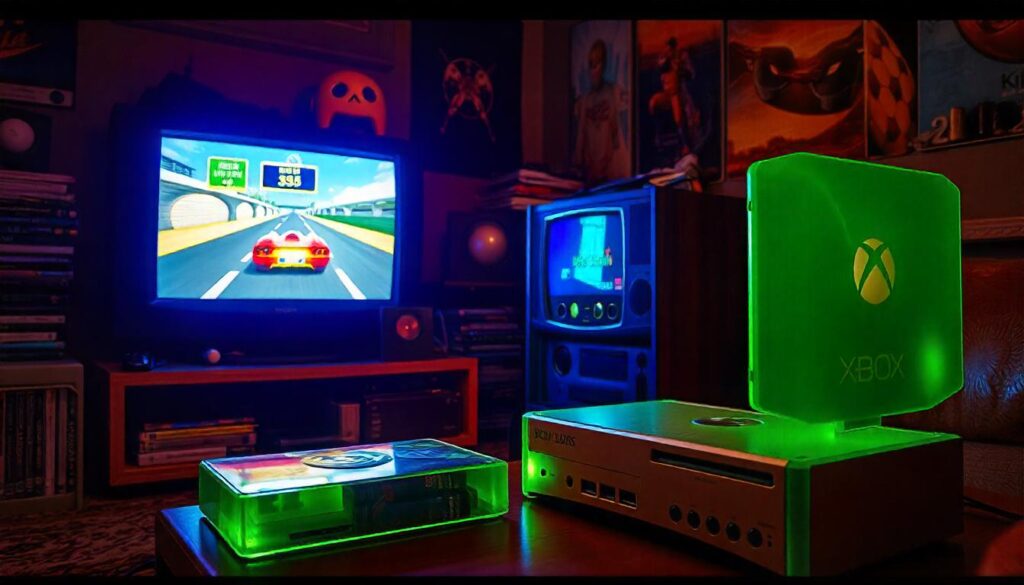Introduction
The early 2000s marked a monumental era in the evolution of technology, where innovative gadgets began to shape the way we live, work, and interact with the world around us. From the birth of the smartphone to the rise of portable media players and wireless technology, the early 2000s was a time of exploration and rapid transformation. The devices that were once at the cutting edge are now nostalgic symbols of a time when we could feel the pulse of technology evolving before our eyes.
As we reflect on these early innovations, it becomes evident that many of the gadgets from that period laid the groundwork for the modern tech landscape we take for granted today. Let’s journey through the must-have devices of the early 2000s and explore how they paved the way for the technology that now dominates our daily lives.
The Rise of the Smartphone: The Birth of Mobile Connectivity
Before the iPhone’s release in 2007, the mobile phone was mostly a device for making calls and sending text messages. The early 2000s, however, saw the birth of a new era of mobile phones that brought far more than just basic communication tools. One of the most iconic early 2000s devices was the BlackBerry, which became a must-have gadget for business professionals. Its QWERTY keyboard was a game-changer for those who wanted to send emails on the go, and it even included wireless email functionality, which seemed almost magical at the time.
Simultaneously, Nokia dominated the mobile market with a slew of popular phones, such as the Nokia 3310, known for its durability and long battery life. While these phones were simple by today’s standards, they represented a huge leap forward from earlier mobile phones. Their compact designs and improved battery life made them indispensable companions for millions worldwide.
The real turning point, however, came with the release of the Apple iPhone in 2007, a device that truly revolutionized the concept of a mobile phone. While the iPhone came at the tail end of the early 2000s, it was the culmination of the ideas that had been brewing throughout the decade. The iPhone introduced a touchscreen interface, the App Store, and the integration of multiple functions such as an MP3 player, web browser, and camera all in one device. This groundbreaking product fundamentally changed the mobile phone from a communication tool to a multi-functional device that has since become the heart of modern life.
Portable Media Players: Music on the Go
The early 2000s were a golden age for portable music, as devices like the iPod and MP3 players made it possible to carry thousands of songs in our pockets. The introduction of the iPod in 2001 by Apple completely transformed the way people experienced music. With its sleek design, a wheel for navigation, and a simple interface, it was a far cry from the clunky, tape-based Walkman that had come before it. The iPod allowed users to store an entire music library on a small, easy-to-carry device, ushering in the era of digital music and paving the way for streaming services that followed.
The early 2000s also saw the rise of MP3 players from various brands, allowing music lovers to enjoy their favorite songs without the limitations of CDs or tapes. These devices were a significant improvement over their predecessors, offering users more control over their playlists and greater portability. The iPod, in particular, sparked a cultural shift, with people seen sporting earphones while walking down the street, creating a new form of personal music experience.
Wireless Technology: Cutting the Cords
The early 2000s were also a time when wireless technology began to gain significant traction. The emergence of Wi-Fi networks allowed people to connect to the internet without being tethered to a physical cable, forever changing the way we use the web. Suddenly, laptops, smartphones, and other devices could connect to the internet from almost anywhere, whether in a coffee shop, a park, or even in the comfort of our own homes.
In addition to Wi-Fi, Bluetooth technology became a game-changer in the world of wireless communication. First introduced in the late 1990s, Bluetooth really began to take off in the early 2000s. The ability to wirelessly connect devices such as headphones, speakers, and keyboards made our lives more convenient and clutter-free. Wireless earbuds, which are ubiquitous today, first became popular with products like Apple’s AirPods and Jawbone’s Bluetooth headsets—devices that allowed for hands-free calls and music listening without the hassle of tangled cords.
Bluetooth also played a pivotal role in the development of wireless gaming peripherals, including controllers for consoles like the PlayStation 3 and Xbox 360. These wireless innovations were part of a larger trend that sought to eliminate the constraints of physical connections and allow for greater freedom and flexibility in how we interacted with our devices.
The Digital Camera Revolution: Capturing Memories Without Film
The early 2000s saw the digital camera boom, and it marked the beginning of the end for traditional film cameras. Brands like Canon, Sony, and Kodak introduced affordable digital cameras that made it easy for everyday consumers to capture high-quality photos without the need for developing film. These digital cameras introduced the convenience of memory cards, allowing users to store hundreds or even thousands of photos on a small, removable chip, making it far more efficient than using rolls of film.
By the mid-2000s, even mobile phones began to incorporate digital cameras, further consolidating the idea that we no longer needed a separate device to capture memories. The Nokia 7650, for example, introduced a built-in camera, marking a turning point in the merging of mobile phones and cameras. Today, we live in a world where smartphones are our primary cameras, a feature that would have been hard to imagine in the early 2000s.
The Laptop Revolution: Power in Our Pockets
Laptops had already been around for years, but the early 2000s saw a shift in their design, performance, and accessibility. No longer the bulky machines they once were, laptops became thinner, lighter, and more powerful. Companies like Apple and Dell led the charge with products like the MacBook and the Inspiron series, which offered improved portability without sacrificing functionality.
These new laptops ushered in an era of working on the go. Whether you were a college student typing away in a coffee shop or a business professional answering emails at the airport, the laptop became an indispensable tool for mobile productivity. The early 2000s also marked the growing importance of wireless connectivity in laptops, enabling users to connect to the internet without being tethered to a wired connection, further enhancing the mobile computing experience.
Conclusion: A Foundation for the Future
The early 2000s were an exciting time for technology, as many gadgets introduced during this period laid the groundwork for the devices we rely on today. The smartphones, portable media players, wireless technology, digital cameras, and laptops of that era were not only innovative for their time but also crucial in shaping the tech landscape of the 21st century.
As we look back with nostalgia at these iconic gadgets, we can appreciate how far technology has come and how much of it owes its existence to the breakthroughs of the early 2000s. The devices we once thought were groundbreaking have now evolved into even more sophisticated tools, yet the legacy of the early 2000s tech is undeniably present in the smartphones, wireless gadgets, and digital experiences that have become integral to our daily lives.


